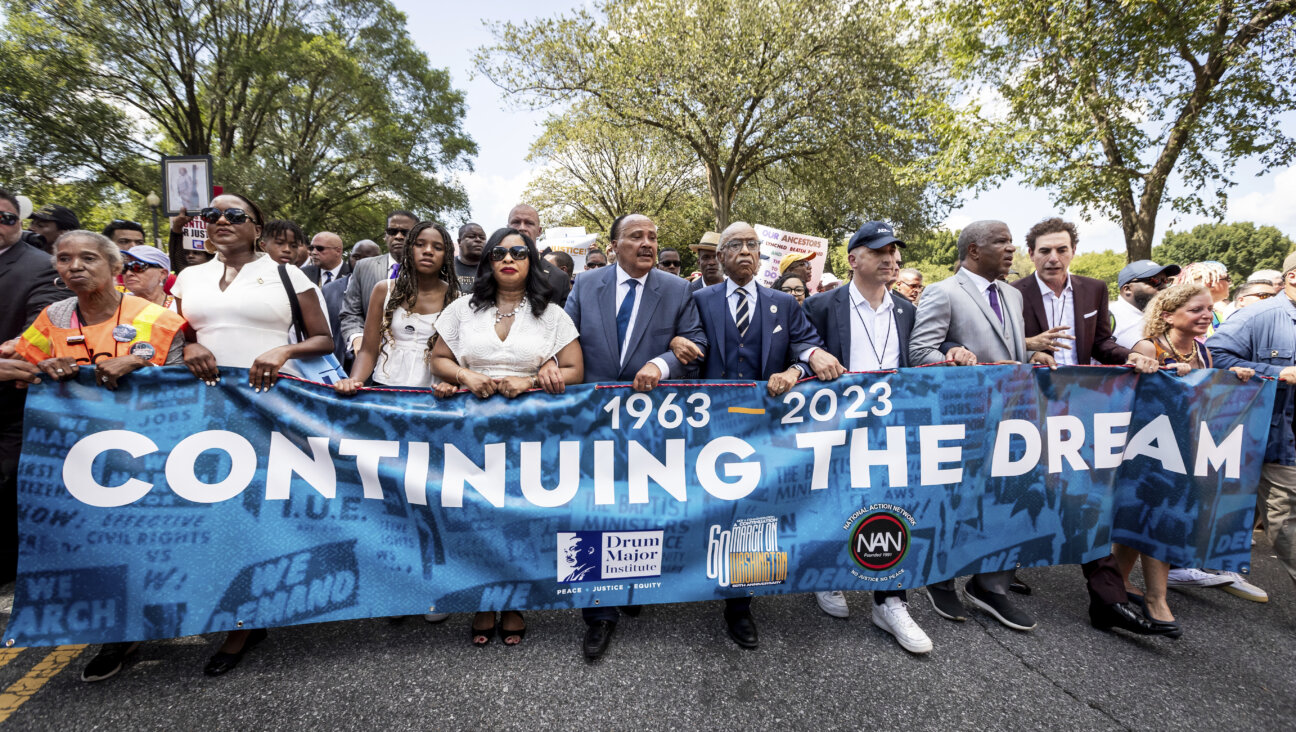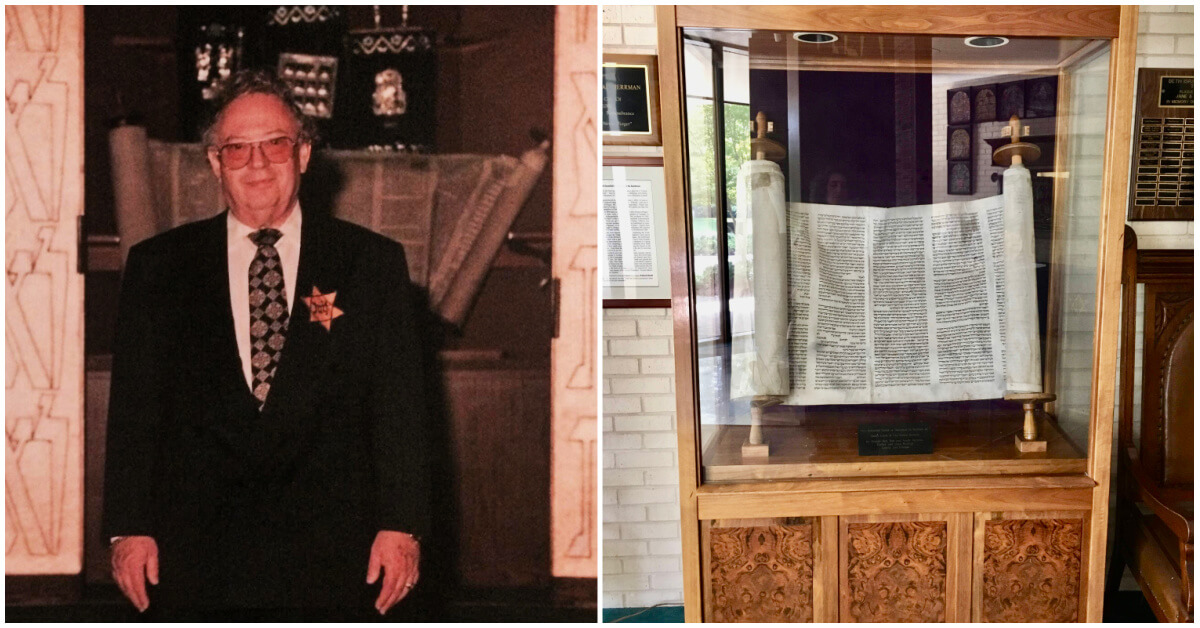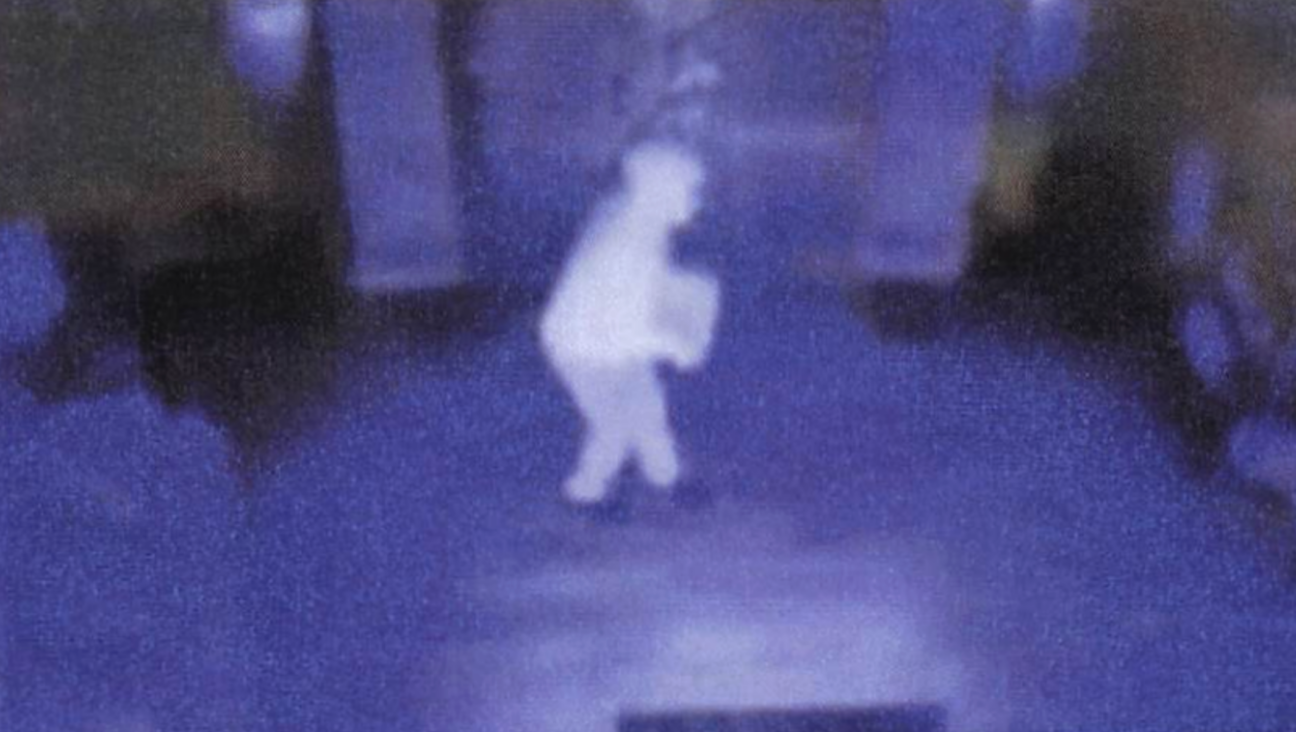Jews built Hollywood. So why is their history erased from the Academy’s new museum?

Graphic by Angelie Zaslavsky
After over a decade of delay caused by money problems, competing narrative visions and the COVID-19 pandemic, the $484 million Academy Museum of Motion Pictures in Los Angeles has finally opened to the public. The Academy heralds its new museum as the most important institution devoted to filmmaking in the world, and one visit bears this out: it is a must see for any cinema lover.
The capacious edifice is tricked out with meaningful exhibits, the latest digital and sound technology and two well-appointed theaters—the 1,000-seat, spherical David Geffen Theater is a sight to behold.
I hoped the museum would also pay homage to the motion picture pioneers who birthed the industry in the early 1900s and reflect the history of families like mine.
But after touring the museum’s seven stories, I discovered that Hollywood’s pioneers, who busted their tucheses building the industry it celebrates, ended up on the cutting room floor.
“We want to attract many different audiences. We want people to see themselves in our programs and exhibitions featuring highly known objects and films as well as lesser-known filmmakers. We aim to create dialogue,” Doris Berger, the museum’s senior director of curatorial affairs, told the Forward.
So, what does the museum’s inaugural main exhibit “Stories of Cinema,” interspersed throughout the first three floors, include? Museum Director Bill Kramer created an Inclusion Advisory Committee to spotlight the work of diverse filmmakers and explore historical omissions – a worthy goal considering the film industry’s notoriously poor record at elevating women and people of color.
The exhibit includes the work of early 20th century Black motion picture pioneer Oscar Micheaux (1884-1951) who produced powerful films for Black audiences; Asian martial arts legend Bruce Lee; Latinx director Patricia Cardoso and her moving 2002 film “Real Women Have Curves” about Latinx women in East Los Angeles; and Spike Lee, the Black auteur whose films have served up brilliant social commentary for three decades. All these artists richly deserve recognition.
But what of the Jews who laid the foundation upon which they built their careers?
I’m sensitive to this because Hollywood history is my family’s history. My great-grandfather Sol M. Wurtzel came to Hollywood in 1917 to run Fox Studio for his boss William Fox. Sol worked at the studio until 1950, frequently putting in 60-hour weeks and producing 700 movies along the way. He joined the Motion Picture Academy at its inception in 1927.

The author’s great-grandfather, Fox Studio Production Executive Sol M. Wurtzel (#23),
with wife Marian to his right and Fox Director Frank Borzage to his left, at the first Academy Awards banquet. Courtesy of Academy of Motion Picture Arts and Sciences
At the first Academy Awards banquet in 1929, Sol and his Fox Studio tablemates had much to celebrate. Two of their 1927 silent films, “7th Heaven” and “Sunrise,” won big. I’m proud my great-grandfather had a hand in the production of these legendary, much-lauded motion pictures.
Hollywood’s founding moguls included Sol’s tyrannical boss William Fox, Adolph Zukor (Paramount), Harry and Jack Warner (Warner Bros.), Carl Laemmle (Universal), Sam Goldwyn and Louis B. Mayer (MGM) and Harry Cohn (Columbia)— all Jewish. They achieved global reach by creating celluloid dream factories whose moving pictures rapidly became America’s most influential cultural export.
But at the museum, they are ghosts. Their presence hangs over the halls— there would literally be no museum, no industry, without them. But the museum’s current installations devote meaningful space only to mogul Louis B. Mayer as the prime mover in founding the Academy and the villainous executive who tormented Judy Garland.
If these long-dead Jewish moguls could speak, I imagine they’d say, What are we, chopped liver?
“We opted not to tell a chronological history,” said Berger of the curatorial process. “Giving a comprehensive motion picture history is not possible. Our goal is to tell complex stories and question film history – so much of which has been forgotten and underrepresented. We are questioning a canon and creating a canon.”
If the aim is inclusivity, then The Academy Museum’s exclusion of its Jewish forbearers strikes me as, at least, ironic. The marginalization of Jews in early 20th century America led directly to Hollywood’s creation. Why not celebrate and acknowledge this from day one?
These mainly Eastern European Jewish immigrants, most of whom, like my great-grandfather Sol, grew up dirt poor without the benefit of higher education, were considered uncouth, scrappy Hebes (and worse) by the antisemitic WASP establishment. “Good” Christian society marginalized and vilified them – only taking notice when the Jews’ déclassé industry started making big bucks.

The museum’s most prominent entry on Hollywood’s founding moguls criticizes Louis Mayer for exploiting and sexually harassing his stars. By Sharon Rosen Leib
As Neal Gabler wrote in the introduction to his seminal 1988 book “An Empire of Their Own: How the Jews Invented Hollywood,” the Jews found a place to succeed in Hollywood because “There were no social barriers in a business as new and faintly disreputable as the movies were in the early years.”
Ultimately, the Academy Museum’s omission reveals historical amnesia regarding the antisemitism the Hollywood Jews routinely faced from the “moralistic” Christian majority. While researching a book about my family’s Hollywood past, I came across an article by Solomon B. Freehof in “American Israelite” headlined “Filthy Movies and Jewish Magnates.”
Reporting on the egregious antisemitism leveled at Hollywood Jews, Freehof quotes a Baptist Minister from Illinois who accused Jewish movie moguls of corrupting young American minds. This minister bemoaned being “at the mercy of the movie magnates who are 90 percent Jews. We do not like to think that a certain type of Jew is able to set the moral standard … yet he is doing so by the influence of the movie pictures. As a matter of fact, what the movie producer gives us is 75 percent filth, licentiousness, crime, lust and debauchery.”
Thus, the Hollywood Jews became victims of their own success – ratcheting up nativist antisemitism in their beloved America, a place that enabled them to reach unimagined heights.
Were they paragons of virtue? Far from it. My great-grandfather, like many of his mogul compatriots, was a compulsive gambler and adulterer. And yet the founding Jews produced a Golden Age of entertainment. Their motion picture studios created countless jobs and helped audiences around the world endure the 20th century’s darkest times – the Great Depression and World War II.
The Museum does a masterful job of exhibiting iconic film objects — the ruby-red slippers Judy Garland used to click her heels in “The Wizard of Oz,” the creature E.T. from Steven Spielberg’s 1982 film “E.T., The Extra Terrestrial,” even the Dude’s abiding bathrobe ensemble from the Coen brothers’ 1998 cult classic “The Big Lebowski.”

Robe ensemble worn by Jeff Bridges as The Dude in The Big Lebowski (1998). Academy Museum of Motion Pictures. By JWPictures/©Academy Museum Foundation, Joshua White
Slippers, bathrobes, puppets— but no context.
I hoped the museum would pay homage to the motion picture pioneers who birthed the industry in the early 1900s and reflect the history of families like mine.
Instead, I left the museum with a pit in my stomach — a trace of existential dread that Jews don’t seem to count or deserve recognition, even after achieving remarkable success in the face of endemic discrimination.
Speaking with Berger pulled me back from the abyss; her curatorial intentions strike me as pure. The Motion Picture Academy and its museum plans to rotate exhibits over time to showcase different movies, artists, eras and genres. I’m hoping the museum’s curators act quickly to memorialize the Academy’s hard-working Jewish founders—warts and all.
After all, the Academy wouldn’t exist without them.
















